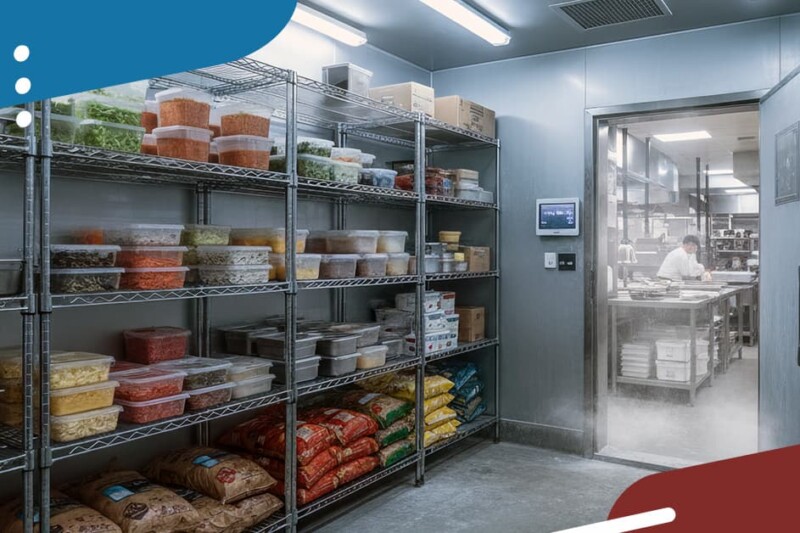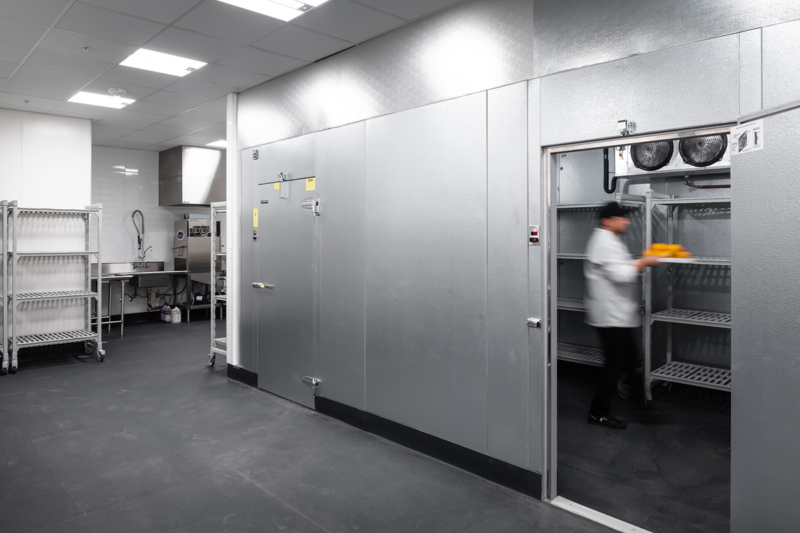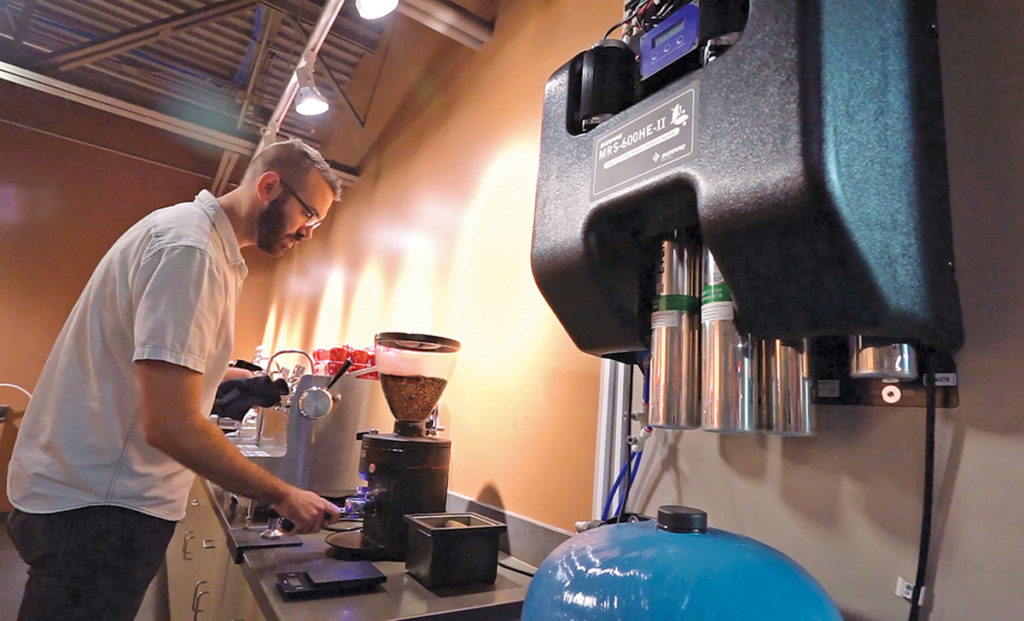
Turn off the pipes, and watch everything in your foodservice operation grind to a halt. Water is used everywhere: it’s pumped into steamers and combi ovens, coffee makers, fountain dispensers, and ice machines; is the base for your broth; and cleans your food, hands and dishware. Although your water may look clean, it actually contains things that can affect the quality of your food and drink, cause expensive damage to equipment, and potentially harm customers’ health.
While finding the right water filtration system for your operation can be complicated considering the endless options available, it all comes down to a basic equation. On one hand you have a certain water quality being piped to your location from your municipality. On the other hand, the equipment in your kitchen requires a certain water quality to prevent damage and deliver optimal and consistent results. You need to find a water filtration system that closes the gap between the water quality you have and the water quality you want.
Test The Water
Your first step is to find out what’s in the water running through your city’s pipes. You can request your municipality’s annual water quality report that includes high and low range of contaminant variations throughout the year. Or, for a more current snapshot, you could have a third party test your water. Some water filtration companies even offer a free water test as part of their service.
Typically, water is tested on its levels of five types of contaminants. Particulates such as dirt, sediment, silt, and rust can make water appear cloudy. Total dissolved solids, the total amount of minerals dissolved in the water, includes chlorides, sulfate, iron, silica, and sodium, which can increase the likelihood of scale build-up and cause spots on dishware. Water also can contain volatile organic compounds that affect taste and smell. Municipalities also add chlorine and chloramines to water to kill microorganisms and make it safe to drink, but those chemicals can affect both taste and equipment. Finally, even with the water treated, water may still contain pathogens—cysts, bacteria and viruses— that could be harmful to health.
Find Your Standard
With the first part of the equation solved—discovering your location’s water quality—it’s time to assess the needs of your foodservice operation. To start, list all your water-using equipment and products. You can install one type of water filtration system at point-of-entry, meaning that all equipment and products will use the same water quality.
Typically, establishments start with a point-of-entry system to filter out sediments and chemicals that are undesired in any equipment or product. Then they install multiple point-of-use filters at various pieces of equipment to deliver specific water quality. For instance, ice makers and coffee makers require additional TDS treatment that protects against scale build-up, yet scale-inhibiting filters can make water taste off when used in fountain dispensers.
Meanwhile steamers and combi ovens also have specific tolerances for scaling minerals and corrosive salts that could corrode equipment, including sensors. Specifically, untreated water can have anywhere from five to 10 times the levels of TDS, hardness, and chloride than the optimal levels outlined by most combi oven manufacturers. In this case, a point-of-use filter with reverse osmosis technology will purify water by forcing it under pressure through a membrane while flushing contaminants away to drain, removing virtually all TDS that can cause damage to steam-generating equipment.
Beyond preventing scale, there also are water quality standards for coffee, tea, espresso and fountain beverages specific to each industry so filtration technologies will vary. For example, the Specialty Coffee Association of America has determined a target TDS of 150 mg/l to produce an optimal-tasting cup of coffee.
Other Considerations
You’ll also want to consider the primary filter system’s rated capacity, which should be greater than the total amount of water that will be used by all water-using equipment it feeds between filter changes, as well at the filter capacity at each point-of-use filter.
The filter system’s flow rate also should be greater than the peak flow requirement of the equipment, or series of equipment, it serves. For example, a c-store with multiple beverage stations, ice machines and coffee stations will need a higher-volume filtration system than a small restaurant with only one ice machine.
Lastly, make sure you choose filters tested and certified by a third-party lab, such as NSF.
Change Is Good
As with any equipment specification, you’ll need to factor in the lifecycle costs of service and management of your water filtration system. Based on your location’s water quality and your volume of use, you’ll need to decide how frequently the filters will need to be changed, the cost for each replacement cartridge and who will manage and perform the changes.
As filter management is often a pain point for operators, some water filtration companies offer quick-change-style filter cartridges that can be switched fast and easily without the need for tools. Other companies are experimenting with the Internet-of-things to connect filters to an alert system to signal when the cartridges are about to reach capacity. Until that technology becomes more mainstream, manufacturers agree that operators should find a way to schedule their own change-filter reminders because the filters themselves, usually located out of sight, are often out of mind, too.
Plan Ahead
More municipalities are using chloramine over chlorine to disinfect the water supply. Chloramine can affect the taste of products, particularly in clear sodas, where it can react with sweeteners causing an ammonia-like taste and odor as well as affect carbonation. It also can damage equipment, particularly in espresso machines and combi ovens where it pits the stainless interior.
Many water filtration companies suggest you start filtering for chloramine in your kitchen even if it’s not currently present in your water because it could be introduced at any time. To filter for both chloramine and chlorine, you’ll need to install high-grade carbon filters with slower flow rates to give water more contact time with the filter. While these cartridges are more expensive, keep in mind that poor quality feed water will actually void the warranty on some equipment, so spending a few hundred dollars on the right filter system could save you several thousand dollars or more down the road.
Reach For The Gold
Justin Thompson, CFSP, CPMR, The YES Group, Mendota Heights, Minn., presented the five steps to reach a gold standard in water filtration during FER’s Multiunit Foodservice Equipment Symposium in January 2018. The five steps are as follows:
1. Make a comprehensive and exhaustive list of each piece of equipment and consumable product that uses water in your establishment. “Operators know immediately when poor water quality causes equipment to fail,” says Thompson, “but they might miss the fact that poor water quality affects the taste of the beverages they’re serving customers, too.”
2. Review your water quality report and talk with the manufacturers of your equipment to identify potential issues that unmanaged water quality could create for equipment and product. More and more companies are including target water quality levels with their manuals, particularly those that make combi ovens as they have unique water requirements.
3. Create your gold standard and establish technologies to use to reach your goal. Beyond preventing problems, think about the optimal water for that perfect product whether it’s ice, coffee, etc. “Each product is going to have a different specification as far as water goes. I would put a table together that lists that one appliance can take X amount of hardness, but another can’t. Start grouping things together.” You may be able to use one filtration system for multiple pieces with similar water quality needs.
4. Determine who will properly maintain treatment. A common mistake is choosing the right filtration system but having no plans about maintaining it. Have a plan for who changes the filters and how often.
5. Commit to success. You want to make sure that everybody has bought into achieving the gold standard. “For instance, if there’s a boil water advisory, what is your protocol? Or if your filters are no longer effective, will you bypass them to keep the restaurant up and running? Or are you so committed to consistent quality that you shut down your beverages?”
Water Filtration Gallery
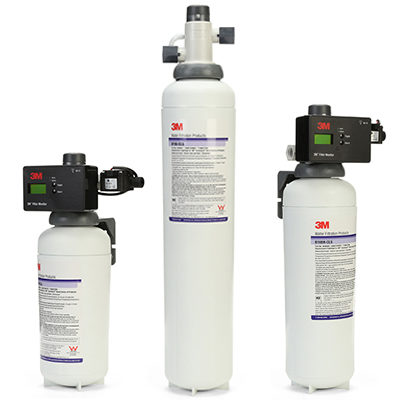
3M SCALEGARD BLEND SERIES
Designed for coffee/espresso machines, 3M ScaleGard Blend Series of Products for Hardness & Chloramines Reduction delivers custom water quality that you control. Simply blend in the desired level of minerals on the system head for recipe-quality water. Systems reduce chlorine taste and odor as well as chloramines that can react with metal, plastic and rubber materials; this reaction may potentially cause equipment damage. Flow rate is .5 gpm; capacity is 530 gal., 749 gal. or 1,249 gal. at 11 grains-per-gallon hardness, depending on model. Products use premium carbon block technology, and have a sanitary quick-change design for fast, easy cartridge changeouts. Choose the optional filtration monitor and app that lets you track life cycle and status of multiple cartridges in many locations from a smartphone, tablet or computer.
3mpurification.com
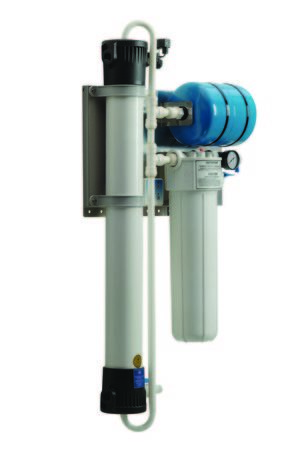
ANTUNES VZN-441V ULTRAFILTRATION SYSTEM
The VZN-441V premium water filtration system delivers high-quality ingredient water to the entire beverage portfolio through a 2-phase process. Water flows through a self-cleaning .015-micron ultrafilter that removes particulates before it enters the carbon cartridge. The separation of mechanical filtration from off-flavor- and odor-reducing carbon filtration ensures only 1 low-cost carbon cartridge change per year, rather than multiple times per year required by competitive products. Since this filtration process prevents the carbon cartridge from becoming plugged, the VZN-441V system achieves the highest-quality water at a lower cost of ownership, according to the company. System’s maximum flow rate is 8 gpm or 15 gpm depending on the model; its rated capacity is 30,000 gal. at 5 gal. per minute.
antunes.com
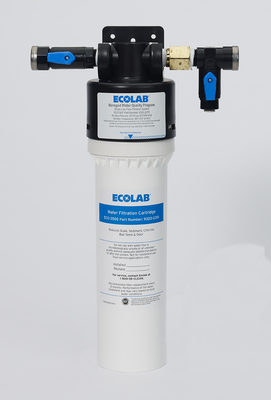
ECOLAB ECO-350 FILTRATION SYSTEM
Ecolab’s ECO-350 Filtration System for smaller applications, such as small ice machines or coffee/tea brewers, helps reduce sediment, chlorine and scale. Activated hollow carbon technology provides 20,000 gal. of chlorine-removal capacity in a compact design. Flow rate is 1.7 gpm. Sanitary quick-change design decreases downtime and risk of contamination during replacement. Minimal upfront cost with installation and routine service included.
ecolab.com
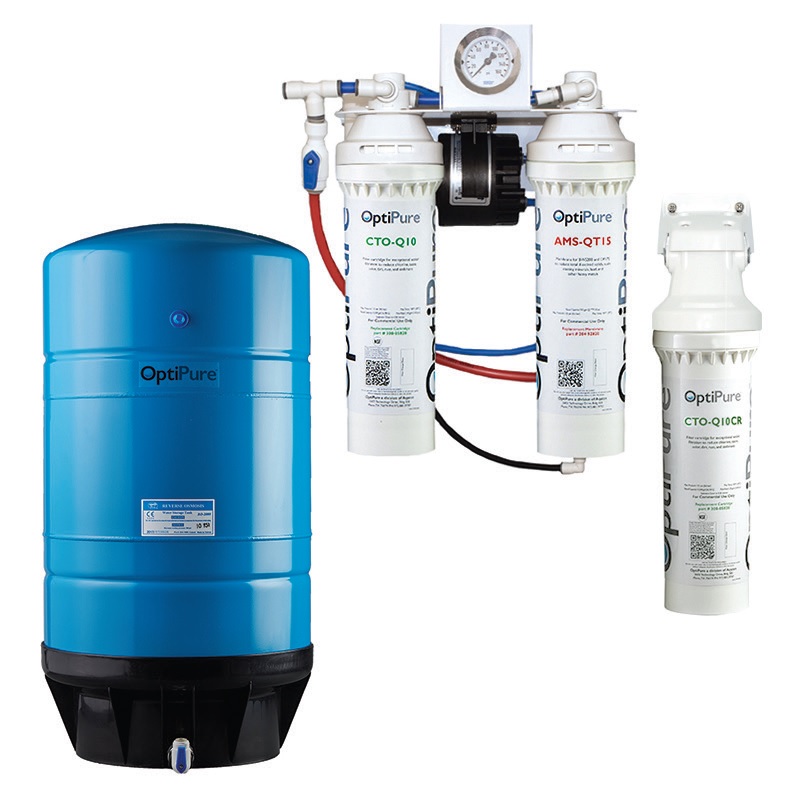
OPTIPURE OPS175CR/16
The OptiPure OPS175CR/16 uses reverse osmosis to remove >97% of the total dissolved solids from water. Then, a balance of minerals is dissolved into the RO water to provide optimized water with desired TDS for recommended applications, including combi ovens, steamers and proofers. System produces up to 175 gal. per day (typically what a steamer, etc., would use); up to 3 gal. per minute service flow with 60 psi inlet pressure. It features an integrated pre-filter which reduces the sediment and chlorine, and a post-filter for chloramine reduction. System includes an operating pressure gauge and a hydropneumatics storage tank that holds up to 16 gal. to meet water requirements for specific applications. The system also has a built-in manual bypass valve. The compact design enables you to wall-mount or install the product under the counter.
optipurewater.com
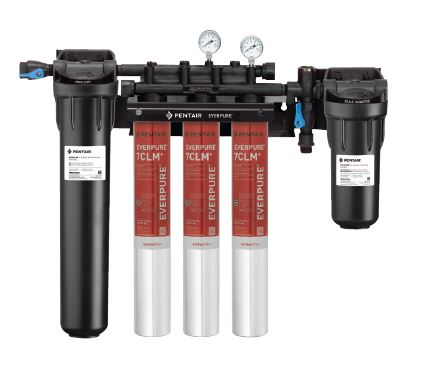
PENTAIR EVERPURE HIGH FLOW CSR TRIPLE-7CLM+
Pentair Everpure’s High Flow CSR Triple-7CLM+ (EV9771-33) uses high-powered, radial flow carbon filtration technology to maximize chloramines reduction. The system offers up to 37,800-gal. capacity and flow rates up to 5 gpm. The company designed the system to Coca-Cola North America Base Filtration Water Treatment Standards. It includes 2 outlets, 1 that provides premium filtered water for fountain beverage dispensers and a second that offers premium filtered water plus scale inhibition for coffee brewers and ice machines. The company offers other CLM+ models for applications requiring up to 77,200-gal. capacity and flow rates up to 8 gpm.
foodservice.pentair.com
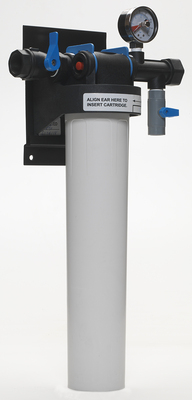
SELECTO HPF SYSTEM
Selecto’s HPF System provides high-performance water filtration in a compact package. The system helps to improve beverage taste and carbonation, increase ice quality and product rates, and inhibit scale formulation build-up on equipment. The modular design lets you combine HPF heads and cartridges as needed to meet the demands of any application or water challenge. Nano aluminum fibers system has a capacity of 15,000 gal.-20,000 gal. and a flow rate of 5 gpm, while the hollow carbon cartridge, scale inhibitor cartridge and nano membrane cartridge all have 40,000-gal. capacity and 2.5-gpm flow rate.
selectoinc.com
RELATED CONTENT
- Advertisement -
- Advertisement -
- Advertisement -
TRENDING NOW
- Advertisement -
- Advertisement -
- Advertisement -

